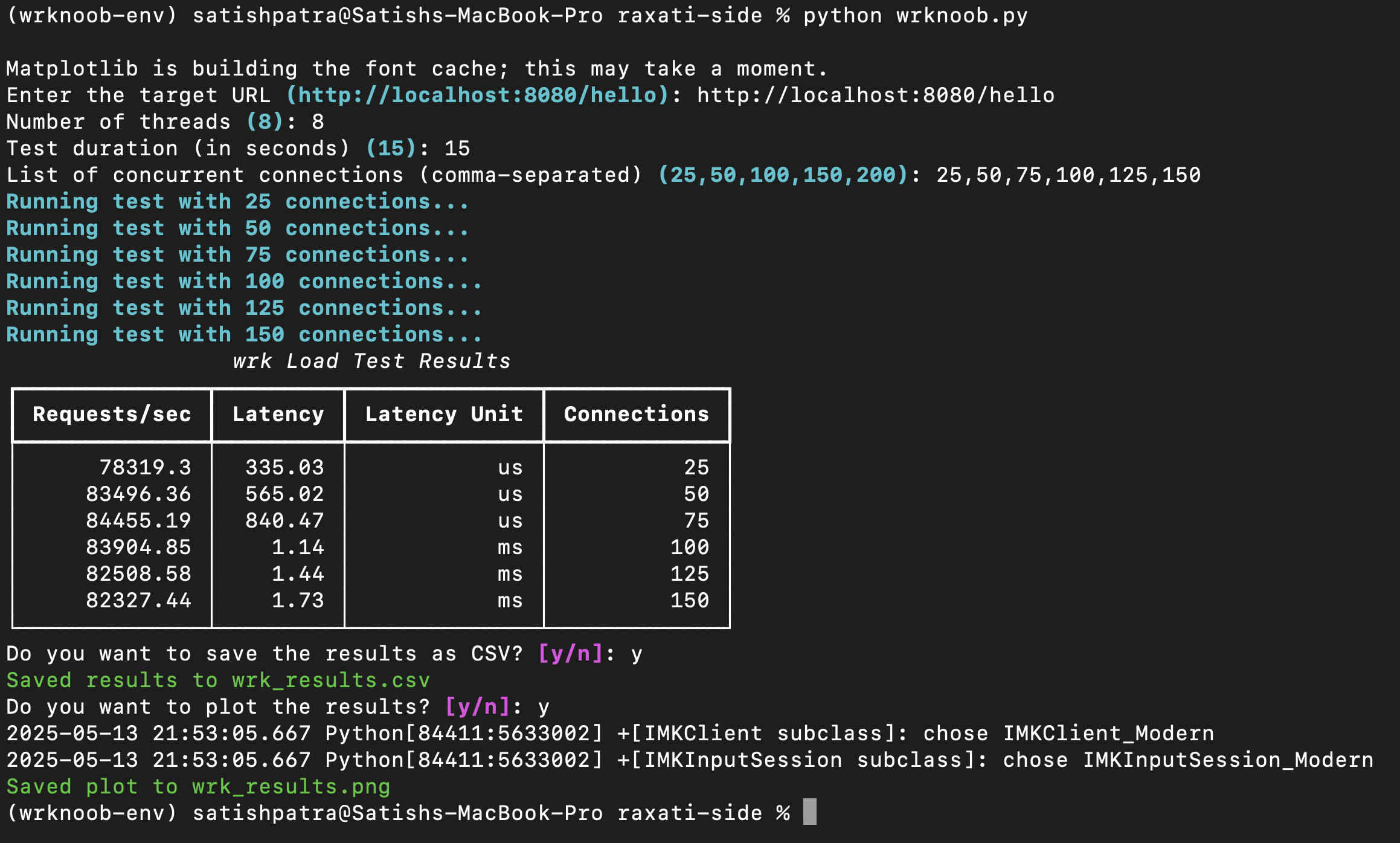Pushing My Local Server to the Limit: Building a Load Testing CLI with `wrknoob`
Lately, I’ve been tuning a Quarkus backend and got curious: How many concurrent requests can this thing actually handle? That’s when I stumbled upon wrk, a modern HTTP benchmarking tool that’s fast and flexible — but also a little unfriendly if you’re just starting out.
So I built a wrapper: wrknoob — a simple, noob-friendly Python CLI that wraps around wrk, runs structured load tests, and shows beautiful terminal tables and plots. Here’s how it went.
The Problem
I could run commands like:
1wrk -t8 -c100 -d15s http://localhost:8080/helloBut over time, I wanted:
- To test across multiple concurrency levels
- To automatically visualize requests/sec and latency
- To save results to CSV
- To avoid flipping between notes and terminal
I didn’t want a full-fledged Grafana dashboard or a k6 setup — just something quick, scriptable, and pretty.
Enter wrknoob
I created a Python CLI tool that:
✅ Asks for input parameters interactively
✅ Runs wrk for each concurrency level
✅ Parses and displays the output beautifully with rich
✅ Plots graphs using matplotlib
✅ Can save results to CSV and images
Features in a Nutshell
- 🎛️ Prompt-based test configuration
- 📊 Graph of requests/sec across concurrencies
- 📉 Latency trend analysis
- 🧾 Rich terminal table for results
- 💾 Export to
report.csvandplot.png
Screenshot

Above: Results table in terminal and corresponding plot
Installation
You’ll need Python 3.8+ and wrk installed. On macOS:
1brew install wrkThen:
1git clone https://github.com/sitasp/wrknoob.git
2cd wrknoob
3python3 -m venv .venv
4source .venv/bin/activate
5pip install -r requirements.txtRun with:
1python wrknoob.pySample Run
1Target URL: http://localhost:8080/hello
2Test Duration (e.g., 10s): 10
3Threads: 4
4Concurrent Connections (comma-separated): 10,25,50,100
5Show Graph? [y/n]: y
6Save Report to CSV? [y/n]: yOutput:
report.csv— with columns like concurrency, req/sec, latencyplot.png— a visual trend of performance
Why I Built This
Load testing felt like a mysterious black box — but writing wrknoob helped me understand:
- The relationship between latency and concurrency
- How saturation begins to degrade performance
- That high req/sec != efficient if latency spikes
Final Thoughts
If you’re testing your APIs, especially on localhost, wrknoob helps you benchmark easier without sweating over wrk flags. It’s not meant for enterprise-scale simulation, but it’s perfect for developers experimenting with performance.
Check out the repo here, and feel free to open issues or PRs!
Happy benchmarking!